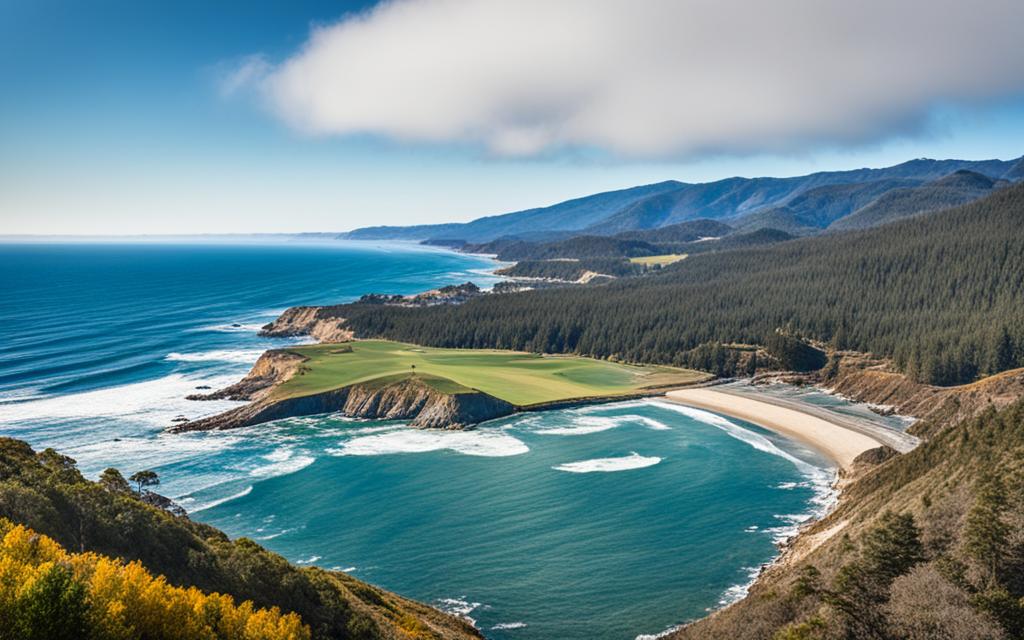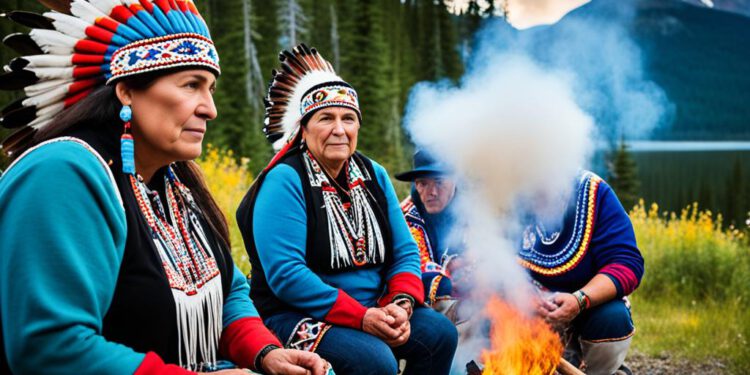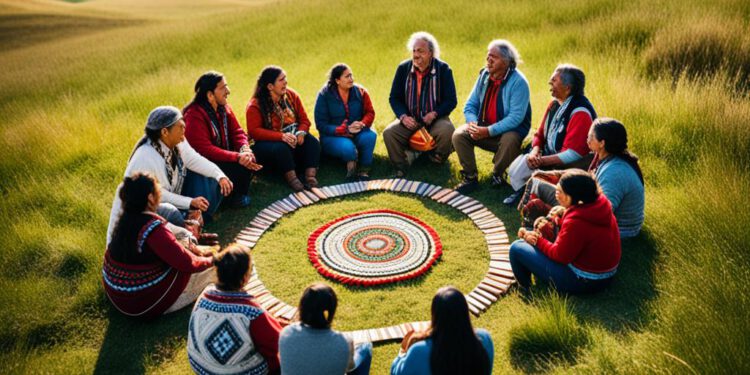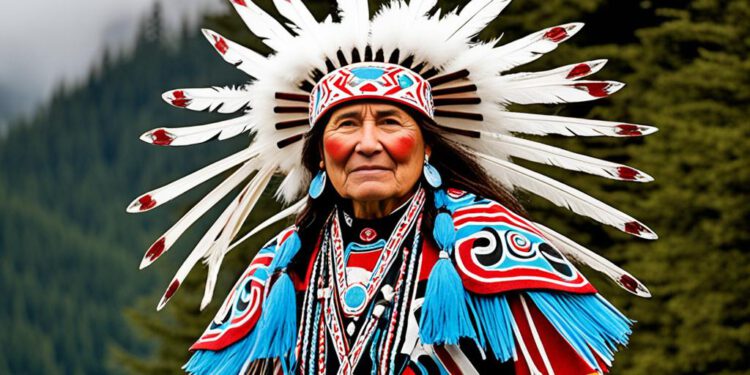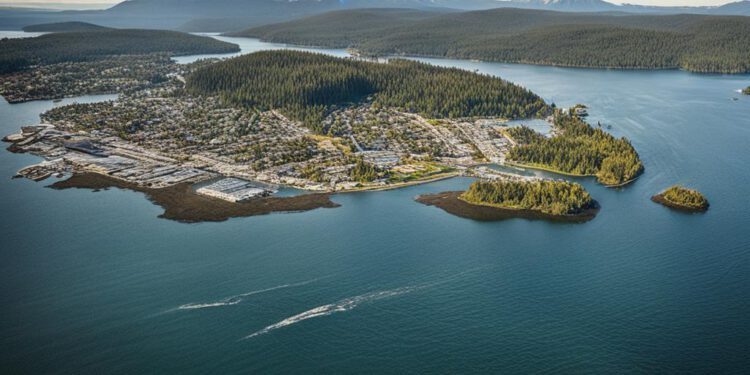Nestled along the breathtaking coastline of British Columbia, the Central Coast Regional District is a land steeped in rich history and cultural heritage. As you explore this captivating region, you’ll uncover the stories of its Indigenous inhabitants, the impact of colonial encounters, and the remarkable evolution that has shaped the district over time.
The Central Coast Regional District’s roots can be traced back to the ancestral lands of the Nuxalk Nation and the Coast Salish peoples, who have called this region home for countless generations. Their deep connection to the land, their traditions, and their resilience in the face of adversity are the foundations upon which this district’s history is built.
Throughout the district’s history, the arrival of European settlers and the devastating impacts of the smallpox epidemic have left indelible marks on the landscape and the lives of the Indigenous communities. Yet, despite these challenges, the spirit and resilience of the Nuxalk and Coast Salish peoples have endured, shaping the district’s narrative in profound ways.
As you delve into the Central Coast Regional District’s past, you’ll discover how the region has evolved, from the establishment of early settlements to the rise of key industries and the development of regional governance. This journey through time will reveal the district’s transformation, showcasing the resilience and adaptability of its people in the face of changing tides.
Exploring the Ancestral Lands
The Central Coast Regional District is steeped in the rich Indigenous history of the Nuxalk Nation and Coast Salish peoples. For centuries, these resilient communities have called this region home, preserving their cultural traditions and deep connection to the land.
Indigenous Inhabitants: The Nuxalk Nation and Coast Salish
The Nuxalk Nation, also known as the Bella Coola people, are the original inhabitants of the Central Coast region. Their ancestral lands stretch along the rugged coastline, where they have thrived for generations, adapting to the unique environment and developing a vibrant way of life. The neighboring Coast Salish communities, including the Sechelt, Squamish, and Musqueam, have also played a vital role in shaping the region’s Indigenous history.
Colonial Encounters and the Smallpox Epidemic
The arrival of European explorers and settlers in the 18th and 19th centuries brought profound and devastating changes to the Indigenous communities of the Central Coast. The smallpox epidemic, introduced by the newcomers, decimated the Nuxalk and Coast Salish populations, leaving a tragic legacy of loss and disruption to their traditional way of life. This colonial impact continues to shape the region’s history and the ongoing efforts towards reconciliation and the recognition of Indigenous rights.
Settlement Patterns and the Rise of Ocean Falls
The Central Coast Regional District of British Columbia has a rich history of settlement patterns that have shaped the region’s development over time. One of the most notable examples is the town of Ocean Falls, which has played a significant role in the area’s regional development.
Ocean Falls emerged as a hub for the forestry industry in the early 20th century, with the establishment of a pulp and paper mill that attracted workers and their families to the area. The town’s strategic location on the coast, surrounded by rugged terrain and dense forests, made it an ideal site for the mill’s operations.
As the mill’s operations expanded, so too did the town’s population. Ocean Falls soon became a thriving community, with a diverse array of businesses, infrastructure, and cultural amenities to support the growing population. The town’s proximity to the ocean and the abundance of natural resources in the surrounding area also made it an attractive destination for recreational activities, further contributing to its regional development.
Over the decades, the fortunes of Ocean Falls have ebbed and flowed, reflecting the broader economic and social changes that have impacted the Central Coast Regional District. While the mill’s closure in the 1980s led to a significant decline in the town’s population, the legacy of Ocean Falls’ settlement patterns and its role in the region’s development continue to be felt to this day.
| Year | Population of Ocean Falls |
|---|---|
| 1920 | 300 |
| 1950 | 3,500 |
| 1980 | 5,000 |
| 2020 | 500 |
The story of Ocean Falls and the Central Coast Regional District’s settlement patterns offer valuable insights into the region’s history and the factors that have shaped its development over time. As the area continues to evolve, these patterns will undoubtedly continue to play a crucial role in shaping its future.
Regional Development and Governance
The Central Coast Regional District has undergone a remarkable transformation over the years, driven by the evolving needs and priorities of the local community. This section delves into the region’s regional development and governance, shedding light on the challenges faced and the ongoing efforts to address them.
At the heart of the region’s development lies the local governance structure, which has played a crucial role in shaping the area’s growth. The Central Coast Regional District is governed by an elected board of directors, responsible for overseeing a wide range of municipal services and initiatives. From infrastructure management to environmental preservation, this governing body has been instrumental in ensuring the balanced and sustainable development of the region.
One of the key challenges faced by the regional district is the vast geographical area it encompasses, which can make it difficult to address the diverse needs of all its communities. However, the board of directors has worked tirelessly to establish effective communication channels and foster collaboration between the various municipalities, ensuring that the unique local histories and identities are respected and incorporated into the overall regional development strategy.
| Key Initiatives in Regional Development | Impact on Local Communities |
|---|---|
| Investments in infrastructure, including road upgrades and broadband connectivity | Improved accessibility and connectivity, supporting economic growth and quality of life |
| Sustainable land-use planning and zoning regulations | Preservation of natural habitats and promotion of responsible development |
| Collaboration with indigenous communities on cultural preservation and economic development | Strengthened relationships, increased representation, and opportunities for shared prosperity |
As the Central Coast Regional District continues to evolve, the governing body remains committed to addressing the unique challenges faced by the region. By fostering regional cooperation, promoting sustainable development, and embracing the diverse cultural and historical legacies of the area, the district aims to ensure a vibrant and prosperous future for all its residents.
Environmental Conservation and Natural Resources
The Central Coast Regional District takes great pride in its commitment to environmental conservation and responsible management of natural resources. As a region blessed with diverse ecosystems and abundant natural wealth, the district has implemented a range of initiatives to protect its environmental heritage for generations to come.
Indigenous Rights and Reconciliation Efforts
Recognizing the profound connection between the land, its natural resources, and the Indigenous peoples who have called this region home for millennia, the district has made significant strides in upholding Indigenous rights and engaging in reconciliation efforts.
- Collaborative resource management: The district works closely with local Indigenous communities, such as the Nuxalk Nation and Coast Salish, to jointly manage natural resources and ensure sustainable practices that honor traditional ecological knowledge.
- Safeguarding cultural heritage: The district has implemented policies and programs to protect sacred sites, cultural landmarks, and traditional land-use practices, ensuring the preservation of Indigenous heritage.
- Reconciliation and dialogue: Ongoing reconciliation efforts, including open dialogues, community events, and educational initiatives, aim to foster mutual understanding, respect, and collaboration between Indigenous and non-Indigenous residents of the region.
By embracing the principles of environmental conservation, responsible resource management, and Indigenous rights, the Central Coast Regional District strives to create a future where economic development, ecological sustainability, and cultural recognition coexist in harmony.
| Environmental Conservation Initiatives | Natural Resource Management Strategies |
|---|---|
|
|
Conclusion
As we conclude our journey through the captivating history of the Central Coast Regional District, it’s clear that this region has weathered remarkable transformations over time. From the ancestral lands of the Nuxalk Nation and Coast Salish peoples to the colonial encounters and the rise of settlements like Ocean Falls, the district’s narrative is a testament to resilience and progress.
The development of regional governance and the ongoing efforts to balance environmental conservation with natural resource management have shaped the district’s unique identity. The recognition of Indigenous rights and the pursuit of reconciliation have also become integral parts of this region’s evolving story, underscoring the importance of honoring the past while embracing a more inclusive and equitable future.
By delving into the rich history of the Central Coast Regional District, you’ve gained a deeper understanding of the forces that have sculpted this remarkable part of the world. From the vibrant Indigenous cultures to the triumphs and challenges of settlement and industrialization, this region’s past holds valuable lessons that can inform and inspire your own journey of discovery. As you continue to explore and engage with the Central Coast, may you find yourself captivated by the region’s enduring spirit and the ongoing quest to preserve its natural wonders and cultural heritage.

